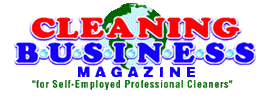Safety and Environmental News
Environment
In January, the Worldwatch Institute presented its report, “The State of the World 1998”, and the Institute’s Director, Lester Brown, says that major corporations and governments may finally be listening to the dire predictions of past reports. The 1998 Report shows advances in renewable energy resources, corporate moves to shift gears in favor of the environment, and increased recognition by governments of the need for sustainable economies.
The 250 page report is annually translated into 30 languages and used in hundreds of colleges in environmental courses.
“The thing that is exciting now is that the world is starting to come around to recognize that the old model is not going to be viable for the world over the long term,” says Brown. He cites Toyota’s new hybrid fuel-cell car, increases in wind-power generation and photovoltaic cell use, and investments by major corporations in renewable energy sources.
Still, Worldwatch warns that the major problems that have been growing for years are still present and pose a threat to human existence: increasing extinction of many species, falling water tables, eroding soil, disappearing wetlands, collapsing fisheries, deteriorating rangelands, and increasingly fouled, shrinking rivers.
However, some critics have long felt that Brown’s predictions are more dire than actual facts. Jerry Taylor, of the rival Cato Institute, points to statistics demonstrating improved life expectancy, child mortality rates and nutritional intake. In fact, Cato has produced a book, “The State of Humanity” which includes 64 essays by environmental experts who challenge Brown’ conclusions. Source: Associated Press, Seattle Times, 1-11-98
SAFETY
NOTE: The following useful safety information is excerpted from our newly revised and available book FOOD SERVICE: HEALTH, SANITATION, AND SAFETY. This information comes from Chapter Four: Safety and Accident Prevention
The Problem
It is commonly felt that accidents “just happen” because of the nature of the work environment, bad luck, or clumsy people. But the fact is that nearly all accidents can be prevented. Accidents do not just happen-they are caused.
Safety is all about prevention. The key is to educate ourselves to see a potential accident situation or faulty work practice so we can then take steps to lower the risk, change the practice, or eliminate the hazard prior to any injury. Safety education must be an ongoing process that creates interest and involves every employee.
People cause most of their own problems: by leaving spills on the floor, knives lying around, by stacking boxes too high, blocking passageways with equipment, ignoring frayed wiring, and by failing to clean grease build-up on hoods, filters, and ventilation ducts. People pick up broken glass with their bare hands, lift heavy loads that can injure them, and stride across wet floors while their minds are elsewhere.
SAD STATISTICS(From The National Safety Council)
- Approximately 5,300 workers were killed on the job in 1995.
- Nearly 4 million workers are injured and miss work each year due to unsafe acts that lead to injuries.
- In 1996, 80 million work days were lost, and $120 billion dollars in wages, production, and medical costs were lost due to unnecessary injuries.
- Over 9,900 work-related injuries occur each day.
- There are approximately 900,000 back injuries each year.
It is important to realize that most accidents are not Acts of God, but unsafe, careless acts of people.
REASONS GIVEN FOR COMMITTING UNSAFE ACTS:
- Habit
- Convenience
- Lack of knowledge
- Not thinking
- Save time
- Increase production
Principles of Safety
- All accidents can be prevented
- Supervision and ongoing
- Practicing safety is sound business
- Never assume that a safety hazard has been reported- report immediately any that you encounter
- All employees need to be involved in safety
Causes of Accidents
- (Types of UNSAFE Conditions):
- Lack of or inadequate safety devices-absence of guards, barriers, emergency switches, etc.
- Flammability or explosivity-improper storage, leaks, spontaneous combustion conditions.
- Susceptibility to unexpected movement-materials improperly stacked, loaded, tied down or braced. Applies to machinery, ladders, vehicles, etc.
- Poor housekeeping-floors and walkways cluttered, slippery, littered, etc.
- Protruding objects.
- Congestion and insufficient clearance.
- Hazardous atmospheric conditions–poor ventilation, improper or unused protective equipment, or lack of knowledge of potential hazards in the air.
- Poor arrangement, placement, or storage.
- Defective tools, equipment–excessive wear, poor maintenance, improper use.
- Inadequate illumination, excessive noise–limits vision, hinders concentration.
- Hazardous personal effects–loose clothing, long hair, dangling jewelry, improper footwear.
List of Dangerous Conditions Which Can Cause Accidents:
- Worn, uneven floors
- Swinging doors
- Doors with faulty closures
- Exits not clearly marked or with lights turned off/burned out
- Materials cluttering aisles or passageways
- Fixtures and equipment in need of repair
- Spilled chemicals
- Spills not immediately cleaned up
- Broken or frayed extension cords
- Chemicals improperly stored/labeled
- Rags and oily waste improperly stored
- Safety guards removed from equipment
- Failure to use safety equipment or protective gear
- Improper attire or footwear
SAFE PRACTICES/SAFETY RULES
- Work in a safe manner-think safety, concentrate on work and movements, no horseplay.
- Report burned out light bulbs promptly, especially in stairways, entrances and exits, parking areas, and near exterior dumpsters.
- Post wet floor signs or barriers whenever needed.
- Position equipment safely while working-return immediately after use-store it properly.
- Use protective equipment.
- Read all labels and MSDS sheets before using any product.
- Disconnect the power source before cleaning any electrical equipment.
- Use walk-off mats at all entryways.
- Use the proper ladder, and use it properly.
- Use proper lifting techniques.
- Report all accidents or injuries immediately.
- Wear appropriate clothing/footwear.
- Do not mix chemicals-use them only according to instructions.
- Store/dispose of oily rags to prevent fire hazard/pollution.
- Report any unsafe conditions.
- Keep electrical panels and custodial closets locked.
- Store all flammable liquids in approved safety cabinets.
















